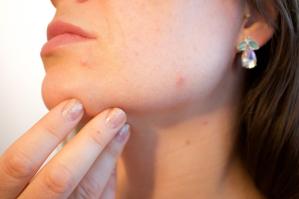What Ingredients to Avoid in Shampoo? 8 Most Harmful Revealed
What Ingredients to Avoid in Shampoo. Studies show that most women and men desire beautiful hair each day to enhance their appearance and confidence.
Why do the ingredients matter so much?
The use of shampoo is to remove the dirt and oil in the hair and the scalp. The scalp of the hair is the most sensitive part, which one should treat with utmost care for the healthy growth of hair. The shampoo is a product primarily used on the scalp, so it is obvious why the ingredients matter. There will often be complaints of hair fall, balding of particular spots, and so on. The reason for all this could be the shampoo one is using and the ingredients in it .
What Ingredients to Avoid in Shampoo? Some shampoos use ingredients like sulfates which are incredibly unhealthy for the hair. To ensure the hair is not damaged because of the shampoo one uses, it is essential to ensure it contains no harmful chemicals. Using the wrong components could induce hair fall, roughen the hair, increase the split ends, and so on. It can also cause skin purging, which happens when one uses ingredients that can speed up the rate of skin cell shedding.
What Ingredients to Avoid in Shampoo, eight of the most harmful ones
1. Sodium Lauryl Sulfate
Sulfates, in general, tends to leave the hair dry and frizzy at time. This compound binds with the hair sebum and removes all the moisture content from the scalp when washed off, resulting in hair fall and increased split ends. This compound can also lead to skin purging and many other harmful effects.
2. Formaldehyde
Formaldehyde is a carcinogenic substance used to preserve shampoo by some companies. Carcinogenic refers to the ability of an element to be a causative agent for cancer. Experiments prove that this element can be absorbed thoroughly by the skin surface, making it very dangerous. The companies will not give the name of this compound directly in the ingredients list. However, there will be an ingredient listed as quaternion-15, a formaldehyde-releasing preservative used in cosmetics.
3. Polyethylene Glycols
PEG is a chemical derived from the compounds of petroleum. The research conducted on this chemical is insufficient to classify this element as harmful. Still, its effects have proved dangerous in some ways, leading many people to believe that it is best to avoid this ingredient in their shampoo.
4. Parabens
These are widely known chemicals to be avoided in skincare and hair care products. Parabens belong to the category of xenoestrogens, which refers to the hormones which can disrupt normal bodily functions or other hormonal functions. They are also said to induce cancer cells though it hasn't been confirmed yet. They are used in shampoos and conditions as a preservative as they have a powerful preserving capacity.
5. Triclosan
Triclosan is an antibacterial agent often added to shampoos as a preservative. This chemical is said to disrupt the endocrine reactions of the body, disrupting the functions of the kidney, leading to weight loss and various other extreme effects. After extensive research, The U.S. Food and Drug Administration banned triclosan from being used in antibacterial soaps, causing skin purging for many users.
6. Fragrance
One might often see the text fragrance listed in the ingredients given on a shampoo bottle. Well, according to researchers, this is terrible news. The scent used in shampoo masks harmful chemicals and covers them with a standard, seemingly harmless word. According to Natural Society, more than 3,100 chemicals are still used by the fragrance industry to cover up the harmful chemicals used in the production of shampoos.
7. Artificial or Synthetic Colors
The colorful shampoos contain harmful chemicals derived from petroleum, coal, and tar. These colors are synthesized artificially against the natural law of color formation and integrated with the shampoo to attract customers, which saddeningly works in their favor. It is crucial to note that these colors can cause many harmful effects to the skin, and at times, it can also lead to skin purging and weakening of the hair in the scalp.
8. Alcohol
Alcohols are one of the most common ingredients in skincare products, but it can be disadvantageous at times for hair care. The dryness caused by these ingredients will lead to the hair getting brittle and will weaken the scalp, leading to increased hair loss. A small amount of alcohol is healthy, but it can lead to a dehydrated scalp if added more than necessary. A simple way to ensure that the alcohol content is not overused would be by checking its position in the ingredient list. The higher the ingredient is, the more used it is in that particular product. If the alcohol content is within limits, it can be advantageous to hair growth.
What does skin purging look like?
Skin purging is acne bursts due to chemical reaction that happens when using certain skin products which contain chemicals like hydroxy acids. They look like red spots or pimples on the skin's surface, which hurts when touched. It is generally advised not to touch or pinch them until they get cleared. Consulting with a medical professional would be the best solution rather than trying any self-made methods.
How often should you exfoliate your body?
As mentioned, the span at which the dead cells are visible is between 28 to 30 days. So, exfoliating once every 30 days or a month would be very effective in obtaining healthy skin and avoiding skin purging. Sensitive areas of the body should be exfoliated once every two months to prevent any irritation or rashes in these areas. When using natural exfoliators, the chances of side effects are much less, and doctors generally try and exfoliate one's body using natural or professional methods.
Steve Sparks
omegapowersales
info@omegapowersales.com
Visit us on social media:
Facebook
Twitter
LinkedIn
Legal Disclaimer:
EIN Presswire provides this news content "as is" without warranty of any kind. We do not accept any responsibility or liability for the accuracy, content, images, videos, licenses, completeness, legality, or reliability of the information contained in this article. If you have any complaints or copyright issues related to this article, kindly contact the author above.



